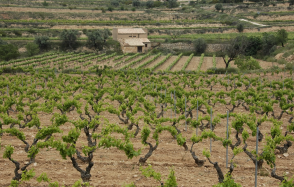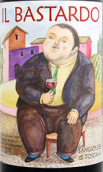 We’ve been posting Doug’s tips for Thanksgiving on Facebook. Here are all five … from “lighten up” to “give up” to “sweet success!” Whatever you choose, here are some fool-proof strategies for picking great bottles to share with family and friends before, during, and after the big meal:
We’ve been posting Doug’s tips for Thanksgiving on Facebook. Here are all five … from “lighten up” to “give up” to “sweet success!” Whatever you choose, here are some fool-proof strategies for picking great bottles to share with family and friends before, during, and after the big meal:
Lighten Up! – Well, that’s good general advice for a day that’s about being thankful for all the gifts of family, friends and the year. In wine terms, though, it means balancing the heaviness of traditional Thanksgiving feasts with lighter, refreshing wines. For whites try minerally Riesling (dry or lightly sweet), crisp Italian whites, or something more exotic like Txakoli. For reds, elegant Willamette Valley Pinot Noir will be a winner, as will good Beaujolais (NOT Nouveau), zingy Northern Italian reds or – a favorite of ours – Mencia from Spain’s Ribera Sacra.
Power Through – It’s a big meal, so match it with full and fleshy wines bursting with bold flavors. American Zinfandel and California Pinot Noirs are the classic suggestions here. But bold Rhone reds like Chateauneuf du Pape and Cotes du Rhone are just as much fun. You can find great value in Spain’s Tempranillo and Monestrell grapes or add a bit of luxury by going with powerful Priorat or even majestic Brunello di Montalcino.
Bring on the Bubbles! – It’s 11 am, the oven is cranked, pots are simmering on the stove, maybe you’ve just come in from setting up the turkey fryer – just imagine how good an ice-cold glass of fizz will taste! Sparkling wine is welcome at every table all year ‘round. Maybe start with some friendly Prosecco or Cava pre-dinner, then step up to rich, toasty Champagne to enhance stuffing and sweet potatoes. And nothing will make the dinner table look more elegant (or those way too heavy mashed potatoes go down easier) than pretty pink rosé fizz in every glass.
Give Up – Look, here’s what every wine professional knows: No wine is a really good match for the cacophonous spread of sweet, savory, tangy and salty foods on the traditional Thanksgiving table. While it’s not obvious how oaky California Chardonnay, rich Napa Cab, or savory matured Bordeaux will pair with your Thanksgiving dinner, who cares? It’s a feast. Eat as much as you like and drink whatever the heck you want to – just be thankful you can!
Finish with Sweet Success – The turkey has been demolished, dishes are piled up waiting to be washed, and only crumbs remain in the pumpkin pie plate. As you settle down to digest and savor the day, one last sip of something sweet is the perfect treat. Port, sweet Chenin, tangy Madeira, subtle Sauternes – any and all will bring an unexpectedly luxurious and delightful close to Thanksgiving Day!
Want to see some specific suggestions in each of these categories? Just visit our CBC Holiday Wine Selections page online and you’ll find our staff favorites for enjoying on Thanksgiving Day and beyond. Or just stop by our give us a call. We’ll be thankful we had the chance to make your Thanksgiving Day just a bit tastier.

 Terra Alta is just southwest of the much more famous Priorat region, about 100 km west of Barcelona in Eastern Spain. This is arid, rocky, and mountainous territory that immediately begs the question – why would anyone try to make wine here?
Terra Alta is just southwest of the much more famous Priorat region, about 100 km west of Barcelona in Eastern Spain. This is arid, rocky, and mountainous territory that immediately begs the question – why would anyone try to make wine here? If Terra Alta is one of the most promising wine regions in Spain (and it is!), then Xavier Clua has to be one of the most promising winemakers.
If Terra Alta is one of the most promising wine regions in Spain (and it is!), then Xavier Clua has to be one of the most promising winemakers.
 So super-Spanish importer Jonas Gustafsson shows up at the tasting table one day and says, “I’ve got some really exciting wines from Valencia.” Now “exciting wine from Valencia” is a bit like “jumbo shrimp” or “military intelligence” – words that don’t seem to go together. After all, Valencia is baking hot, bone dry, and mainly turns out coarse, heavy, thick reds for the bulk trade.
So super-Spanish importer Jonas Gustafsson shows up at the tasting table one day and says, “I’ve got some really exciting wines from Valencia.” Now “exciting wine from Valencia” is a bit like “jumbo shrimp” or “military intelligence” – words that don’t seem to go together. After all, Valencia is baking hot, bone dry, and mainly turns out coarse, heavy, thick reds for the bulk trade.
 We’re enjoying the crazy label on our Carryout Case Special This Week, and chuckling at the fact that this great Sangiovese deal with the silly label comes in … a wood case! Here’s the story behind the wine …
We’re enjoying the crazy label on our Carryout Case Special This Week, and chuckling at the fact that this great Sangiovese deal with the silly label comes in … a wood case! Here’s the story behind the wine … About a decade ago, the family started a second winery called Renzo Masi to purchase fruit from friends, neighbors with, as Wine Advocate explains, put an “emphasis on value wines with vibrant territorial personality.” We think they do a great job and are proud to have Renzo Masi Chianti Reserva 2011 on our shelves right now – a very nice Chianti value for $15.
About a decade ago, the family started a second winery called Renzo Masi to purchase fruit from friends, neighbors with, as Wine Advocate explains, put an “emphasis on value wines with vibrant territorial personality.” We think they do a great job and are proud to have Renzo Masi Chianti Reserva 2011 on our shelves right now – a very nice Chianti value for $15.
 Getting the Fruit to Bottle. In contrast to the winery’s original style, Germain’s focus now is on getting his fruit to bottle with as little manipulation and handling as possible. For Chardonnay, that means no destemming before pressing – because knocking the berries off the stems opens the grape to the risk of oxidization before fermentation. Instead, whole clusters go directly to the press were the juice can be gently extracted and flow by gravity directly into tank for settling.
Getting the Fruit to Bottle. In contrast to the winery’s original style, Germain’s focus now is on getting his fruit to bottle with as little manipulation and handling as possible. For Chardonnay, that means no destemming before pressing – because knocking the berries off the stems opens the grape to the risk of oxidization before fermentation. Instead, whole clusters go directly to the press were the juice can be gently extracted and flow by gravity directly into tank for settling.